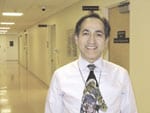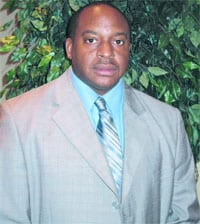The Crunch Continues No Relief Is In Sight For The Nursing Shortage
The crunch is becoming a crisis.
Despite efforts at the student and professional levels to alleviate an ongoing nursing shortage in Massachusetts, hospitals are still reporting nurse vacancy rates of nearly 10{06cf2b9696b159f874511d23dbc893eb1ac83014175ed30550cfff22781411e5} on average.
That statistics were released by the Mass. Hospital Assoc. (MHA), which reported that while average registered nurse (RN) vacancy rates are 9.9{06cf2b9696b159f874511d23dbc893eb1ac83014175ed30550cfff22781411e5} across the Commonwealth, some high-pressure fields, such as inpatient oncology, telemetry, critical care, and medical/surgical, report nursing vacancy rates of up to 15{06cf2b9696b159f874511d23dbc893eb1ac83014175ed30550cfff22781411e5}.
The MHA teamed up with the Mass. Organization of Nurse Executives (MONE) on the survey, which had two goals: to assess the depth and severity of workforce shortages in the nursing field and to identify and share ‘best practices’ that hospitals are using to recruit and retain staff. More than 80{06cf2b9696b159f874511d23dbc893eb1ac83014175ed30550cfff22781411e5} of Massachusetts hospitals responded.
And, for the moment, the news is not positive, as 68{06cf2b9696b159f874511d23dbc893eb1ac83014175ed30550cfff22781411e5} of hospitals rate their nursing shortages in at least some departments as ‘moderate’ or ‘severe.’ That’s an even greater problem when one considers that it can take acute care hospitals more than 60 days to fill nursing positions in the most high-pressure fields. And demographic trends indicate that the need for nurses will only continue to rise over the next decade.
“We’re in trouble in terms of the Baby Boomer generation coming into their latter years,” said David T. Young, the MHA’s director of media relations. “By 2008 or 2010, hospitals in Massachusetts are going to be in trouble unless we do something now.”
Sobering Statistics
Words of concern aren’t necessary to give an idea of the scope of Massachusetts’ nursing problem — the numbers speak for themselves. The RN vacancy rate of 9.9{06cf2b9696b159f874511d23dbc893eb1ac83014175ed30550cfff22781411e5} holds true for both acute care and specialty hospitals. For licensed practical nurses (LPNs), the 58 acute care hospitals that responded to the survey report a 10.5{06cf2b9696b159f874511d23dbc893eb1ac83014175ed30550cfff22781411e5} vacancy rate, while that figure jumps to 20.3{06cf2b9696b159f874511d23dbc893eb1ac83014175ed30550cfff22781411e5} for the 18 specialty hospitals that responded. Meanwhile, certified nurse assistant (CNA) vacancy rates are 13.6{06cf2b9696b159f874511d23dbc893eb1ac83014175ed30550cfff22781411e5} in acute care hospitals and 8.2{06cf2b9696b159f874511d23dbc893eb1ac83014175ed30550cfff22781411e5} in specialty hospitals.
Broken down by shifts, hospitals tend to face the greatest shortages late in the day and overnight, with the 11 p.m. to 7 a.m., 3 to 11 p.m., and 7 p.m. to 7 a.m. shifts experiencing the greatest shortages of RNs. A full 74{06cf2b9696b159f874511d23dbc893eb1ac83014175ed30550cfff22781411e5} of surveyed hospitals said the crunch from 11 p.m. to 7 a.m. is ‘moderate’ or ‘severe.’
As might be expected, the widespread shortage and resulting increased competition for a dwindling labor pool have strained recruitment and retention efforts. Of the hospitals surveyed, 86{06cf2b9696b159f874511d23dbc893eb1ac83014175ed30550cfff22781411e5} report difficulty filling critical-care RN positions, while 70{06cf2b9696b159f874511d23dbc893eb1ac83014175ed30550cfff22781411e5} of those reporting difficulty in filling telemetry RN positions say it takes at least 60 days, if not longer, to fill open positions.
Hospitals are being as creative with their recruiting as they can, the report indicates, offering incentives such as tuition reimbursement, generous health benefits, retirement plans, continuing education, compensation based on years of experience, employee referral fees, and signing bonuses, among others. Meanwhile, hospitals report that the most effective advertising comes from their own Web sites, followed by Internet job posting sites, direct mail advertising, and job fairs.
But to truly reverse the ominous trends, Young said, there must be a statewide promotion of the nursing field and continual improvement in the hospital working environment.
For starters, state Sen. Richard T. Moore, who chairs the Senate’s Com- mittee on Health Care, and U.S. Sen. John Kerry have both introduced legislation to increase scholarships and other incentives to draw workers into nursing. Meanwhile, a $3 million fund from the state Department of Labor is being used to move less-skilled nurses, such as LPNs, up the career ladder by assisting with their education.
As for improving nurses’ working environment, Young said, that’s a more complex issue, but it is a crucial one. “It’s a stressful atmosphere, and we do realize it’s a tough environment. It’s not like a factory where cars are being made. You’re dealing with human beings.”
Early Intervention
Medical professionals have asserted for some time that change must begin not only at the hospital level but at the high school and college levels, building a greater nursing pool through a concerted effort to promote the profession to a new generation.
Anne Glanovsky, director of nursing at American International College (AIC) in Springfield, said that nursing shortages are cyclical, with occasional crunches leading to greater career opportunities, which leads to more women and men seeking to join the field. “There’s usually a shortage, so more people become trained as nurses, and then there are too many people out there in the profession,” she said.
However, Glanovsky sees the current shortage — and the wide-open employee market — lasting longer than previous ones. Part of that has to do with the average age of nurses in the United States, which is approaching 45.
“The graying of America’s nurses is an issue,” she said. “A large number of nurses will start retiring in 2005, which is when many of the trend watchers expect the shortage to hit rock bottom.”
A recent American Hospital Assoc- iation report echoed that perception, noting that “the current shortage mirrors many of the characteristics of the workforce shortages hospitals have faced in the past. But this shortage is different because it is the prelude to a long-term shortage that results from key demographic and societal trends.”
Nursing programs at Western Mass. colleges have all reported an uptick in enrollments, including a 40{06cf2b9696b159f874511d23dbc893eb1ac83014175ed30550cfff22781411e5} increase since last semester at AIC, Glanovsky said. However, she insisted, if the new crop of nurses doesn’t keep pace with the expected retirements, the problem will worsen nonetheless.
That’s a major worry, she added, citing a recent study published in the New England Journal of Medicine that determined that 126,000 nursing vacancies in United States hospitals are having a national impact on patient health.
The federally funded study is the first major nationwide research to document the relationship between patient health and nursing staff levels — but it’s not likely to be the last, at least if current trends hold true.
All of that points to an even greater need to promote the nursing profession not only to college students but to high school students as well, Young said. He explained that hospitals have always fared best with nurse staffing when the economy is uncertain, so that cycle will always manifest itself, but the need to replenish a dwindling pool is even greater at a time when the average age of both patients and nurses is on the rise.
“We need to grab them at a younger dynamic — in junior high and high school — to create a better pool,” he said.
It’s especially troubling, he added, that one in seven hospitals reports a greater than 15{06cf2b9696b159f874511d23dbc893eb1ac83014175ed30550cfff22781411e5} shortage in nurses, considering that the number of hospitals in the Commonwealth has shrunk from 114 to 68 since the late 1980s.
The Bottom Line
The numbers simply don’t lie: nursing vacancy rates in Massachusetts hospitals are at a 14-year high. The fact that 90{06cf2b9696b159f874511d23dbc893eb1ac83014175ed30550cfff22781411e5} of all hospitals have an affiliation with a nursing school and two-thirds provide school career days — combined with more creative recruitment strategies — is a positive sign, Young said, but there’s still a long way to go to ensure adequate, safe staffing.
The need for nursing care isn’t going away — but the current pool of nurses is slowly doing just that. Replacing them, not just for today but for the long term, looks to remain a health care priority in the Bay State for years to come.


